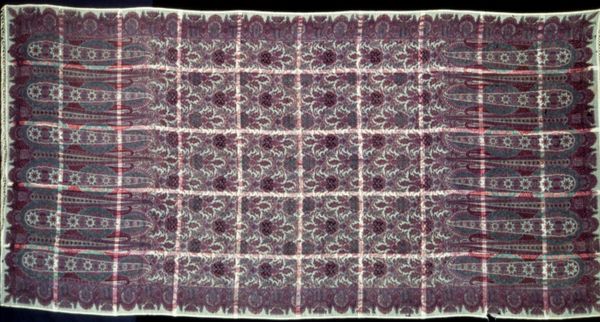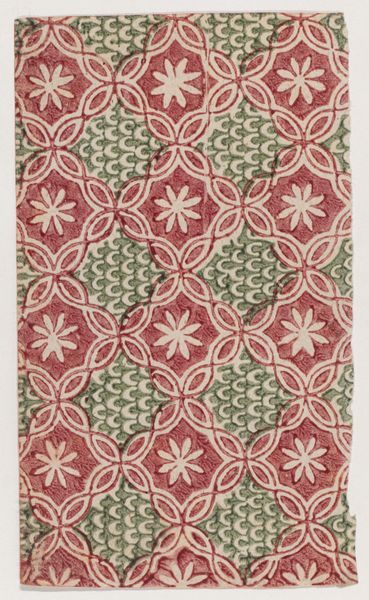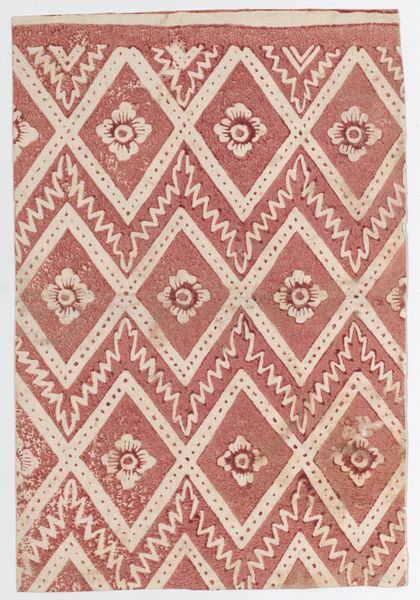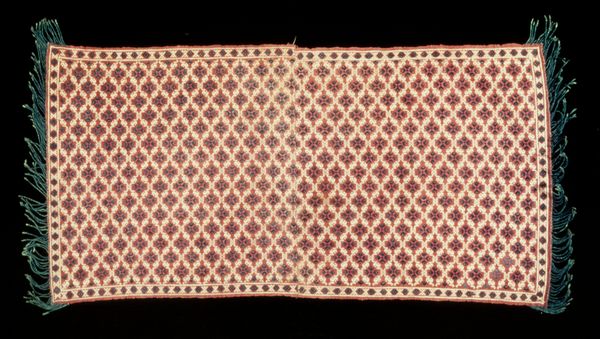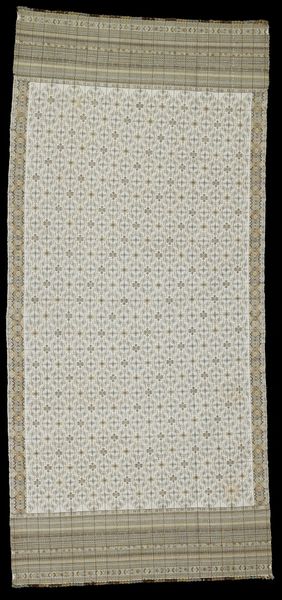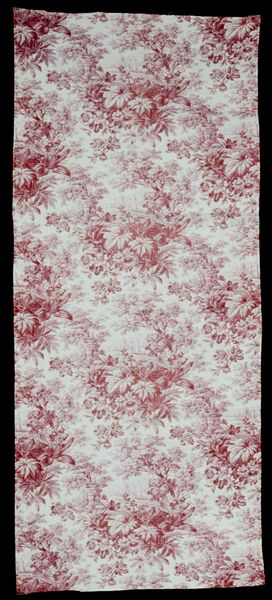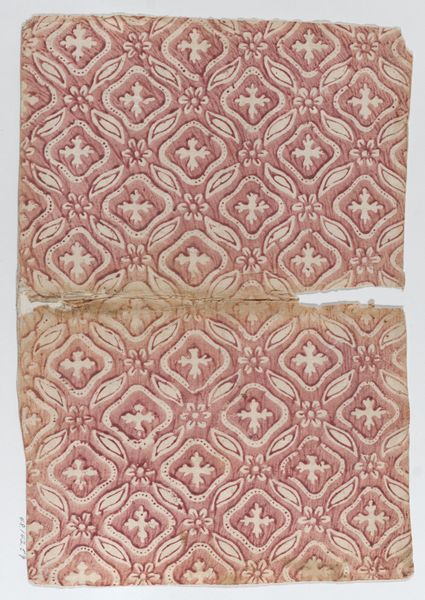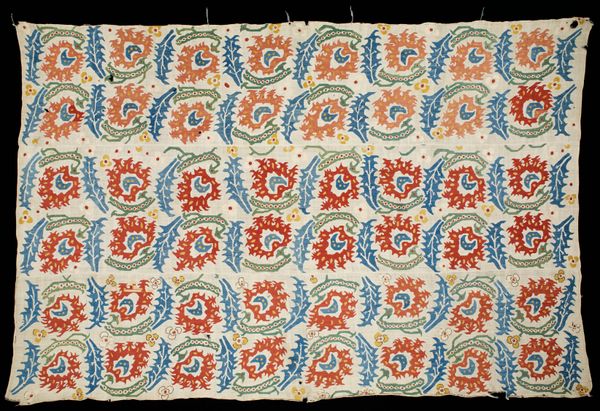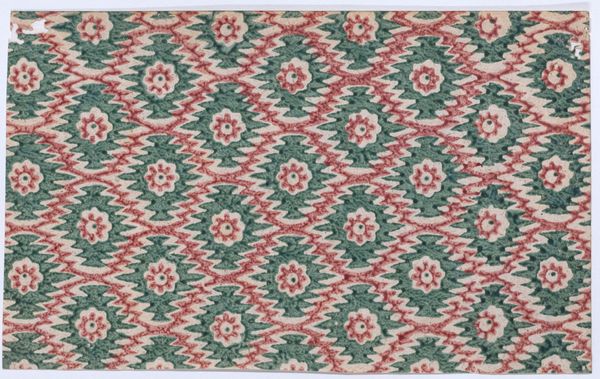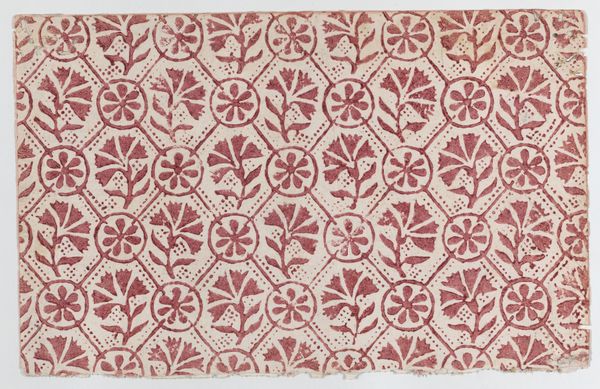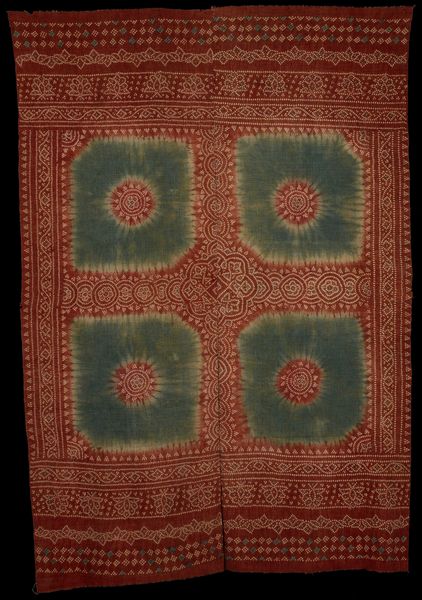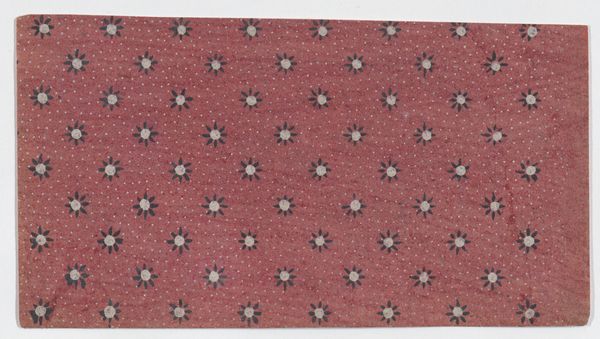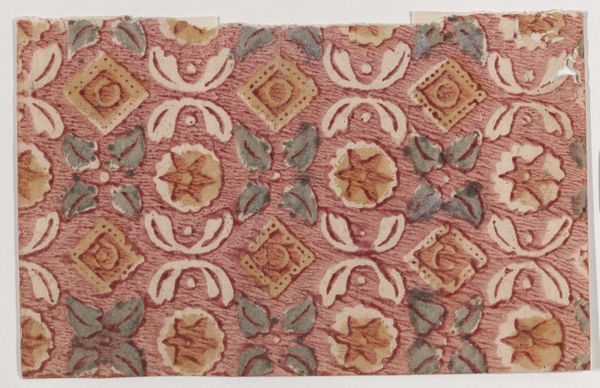
silk, weaving, textile
#
pattern heavy
#
natural stone pattern
#
silk
#
pattern
#
weaving
#
textile
#
geometric pattern
#
organic pattern
#
geometric
#
repetition of pattern
#
pattern repetition
#
textile design
#
decorative-art
#
italy
#
imprinted textile
#
layered pattern
#
funky pattern
Dimensions: 71 1/2 x 57 1/2 in. (181.61 x 146.05 cm)
Copyright: Public Domain
Curator: Look at this stunning bed cover, a textile artwork dating back to the 17th century, crafted by an anonymous artisan in Italy, which now resides here at the Minneapolis Institute of Art. Editor: My immediate impression is a field of frozen starlight. The repetition is mesmerizing. I'm really drawn to the evidence of labor. The density of stitching. Curator: Yes, the repeating square motifs give the impression of both order and radiating energy. Considering it was a bed cover, a domestic object, I'm curious about its symbolic language within the context of the Italian home. Each square seems to hold unique emblems or distillations. Editor: Absolutely, and let’s think about the silk used. Such finery wasn't widely available. How did the maker access this, and how long might it have taken to produce a piece this size, considering it's entirely hand-stitched, by the look of it? It invites considerations about consumption and the economic circumstances under which this cover was created. Curator: The central geometric forms certainly imply some celestial mapping or stylized floral representation. Motifs such as these can become containers of cultural values passed down through generations, encoded within everyday objects. One can consider that beds themselves possess layered significance throughout history as liminal spaces between waking and dreaming. Editor: Right. This wasn't simply to keep someone warm; the very act of creating, and the acquisition of costly silk points to ritualistic intentions that elevate labor to an art. I find the very texture to whisper volumes. It really urges us to contemplate the socio-economic implications and craft knowledge of the era. Curator: Looking at the subtle shifts in patterns between each panel, each has different motifs in similar organizational position which could signify specific virtues or blessings sought for the owner of this bed covering, so we can find that some textiles often blurred the boundary between utilitarian object and talisman. It shows how design choices shape emotional experiences, embedding values within functional items. Editor: Thank you. Contemplating the life embedded into each thread definitely transforms my view of this material object, its journey.
Comments
minneapolisinstituteofart about 2 years ago
⋮
This bed cover is part of a larger set of bed linens that includes six curtains, a valance and a head panel. In the sixteenth century bed curtains served a variety of functions apart from mere decoration. They not only provided privacy, they could protect the sleeper from intruding insects and creatures, and they were an important means of retaining warmth in an era preceding the invention of central heating. Image
Join the conversation
Join millions of artists and users on Artera today and experience the ultimate creative platform.
